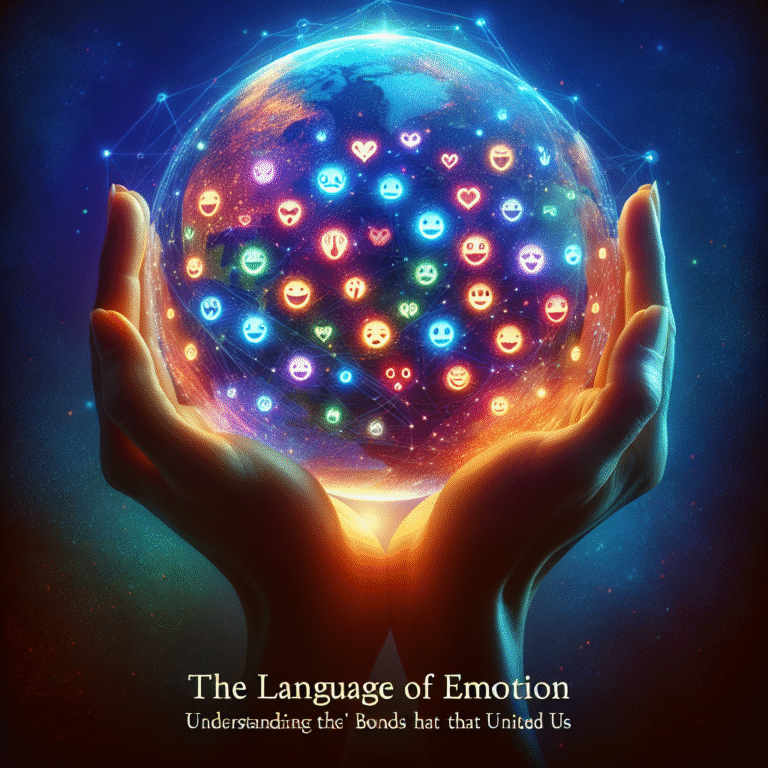
Introduction
In a world that thrives on connection and communication, understanding the nuances between empathy and sympathy can significantly elevate our interactions. While often used interchangeably, these two concepts serve different purposes in nurturing relationships. Recognizing the distinction between empathy vs. sympathy: understanding the distinction for better communication can empower us to express genuine support and foster deeper connections.
Imagine a friend shares the news of a heartbreaking loss. How you respond can either fortify the relationship or create emotional distance. The essence of communication is not just in words but in the emotions they convey. This article delves deeply into the contrasting yet complementary roles of empathy and sympathy, offering insights and practical applications for enhancing your communication skills.
Defining Empathy and Sympathy
What is Empathy?
Empathy is the ability to understand and share the feelings of another person. It’s about putting yourself in someone else’s shoes, enabling you to connect on a deeper emotional level. This connection fosters trust and openness, encouraging others to share their experiences without fear of judgment.
Key Components of Empathy:
- Cognitive Empathy: Understanding someone’s thoughts and feelings intellectually.
- Emotional Empathy: Feeling what another person feels, experiencing their emotions alongside them.
- Compassionate Empathy: Taking a step further by taking action to support someone in need.
What is Sympathy?
Sympathy, on the other hand, involves acknowledging someone’s emotional hardships and offering comfort or consolation without necessarily feeling their pain. It creates a sense of distance, as the sympathizer remains on the outside looking in, offering kindness while not fully engaging with the emotional experience.
Key Components of Sympathy:
- Acknowledgment of Feelings: Recognizing that the other person is suffering.
- Expression of Care: Demonstrating concern or sorrow about their situation.
- Offering Support: Providing a kind word or gesture to express support.
The Importance of Understanding the Distinction
Communication in Personal Relationships
Effective communication is the cornerstone of healthy relationships. Misunderstandings can arise when individuals conflate empathy and sympathy. For instance, a partner going through a difficult time may not need mere sympathy but rather empathetic understanding and support.
Case Study: Sarah and Tom’s Relationship Struggles
Sarah faced chronic stress due to her job, impacting her relationship with Tom. When Tom responded with sympathetic remarks like, "I’m sorry you’re going through this," Sarah felt unsupported. However, when he shifted to empathy by saying, "I can understand how overwhelming this must feel for you," their conversation deepened, allowing for a more meaningful connection.
Professional Communication
Understanding the dynamics of empathy vs. sympathy is equally essential in the workplace. Leaders and colleagues who practice empathy foster a positive, collaborative environment.
Case Study: The Impact of Empathy in Leadership
Research indicates that leaders who exhibit empathy see improved team morale and productivity. A study conducted by the Business School at the University of New Hampshire found that empathetic leaders have teams that perform 20% better, as employees feel valued and understood.
Empathy vs. Sympathy in Conflict Resolution
Navigating conflicts requires a nuanced understanding of both empathy and sympathy. When disagreements arise, empathetic approaches can lead to effective resolutions by validating emotions without assigning blame.
Analyzing a Conflict: Jane and her Colleague
During a project, Jane and her colleague disagreed on the direction to take. Instead of expressing sympathy by saying, “I understand it’s tough sometimes,” Jane chose an empathetic approach, saying, “I can see why you feel passionate about this. Let’s explore your ideas further.” This shift fostered collaboration, leading to a successful outcome.
Visualizing the Distinction
To further clarify the differences between empathy and sympathy, here’s a comparative table:
| Aspect | Empathy | Sympathy |
|---|---|---|
| Emotional Engagement | Deep emotional connection | Acknowledgment from a distance |
| Understanding | Shared feelings, shared experiences | Recognizes feelings without sharing |
| Response Style | Active listening and validation | Kind words and consolation |
| Outcome | Stronger relationships | Surface-level support |
Improving Communication through Empathy
Practicing Active Listening
Active listening is a fundamental skill for practicing empathy. It involves fully concentrating, understanding, and responding to the speaker. Here’s how to engage in active listening:
- Maintain Eye Contact: Show you are engaged and concerned.
- Avoid Interrupting: Let them finish before reacting.
- Reflect Back: Paraphrase to ensure understanding, e.g., “It sounds like you’re feeling overwhelmed because…”
Asking Open-Ended Questions
Encouraging open dialogue allows individuals to express emotions freely. Utilize open-ended questions such as, “How did that make you feel?” This promotes a deeper understanding and connection.
Validating Emotions
Validating someone’s feelings creates a safe space for emotional expression. Simple phrases like, “It’s okay to feel this way” can empower the other person to share without fear.
Conclusion
The distinction between empathy and sympathy plays a crucial role in enhancing our communication skills. By practicing empathy, we can foster deeper connections, whether in our personal lives or professional environments. Understanding the emotional landscape of those around us can lead to more meaningful conversations and stronger relationships.
Remember, communication is not just about exchanging words but also about understanding hearts. Let’s commit to a more empathetic approach in our interactions, inspiring others to do the same.
FAQs
1. What is the main difference between empathy and sympathy?
Empathy involves understanding and sharing another person’s emotional experience, while sympathy is about acknowledging their feelings from a distance without necessarily feeling them yourself.
2. Can sympathy ever be harmful?
Yes, excessive sympathy can lead to a power imbalance where the sympathizer may unintentionally undermine the feelings of the person suffering by minimizing their experience.
3. How can I practice empathy in my daily life?
You can practice empathy by actively listening, validating feelings, and engaging in open conversations that encourage emotional expression.
4. Is empathy a skill that can be learned?
Absolutely! Empathy can be cultivated through practice, self-awareness, and a willingness to understand others’ perspectives.
5. How does empathy improve workplace relationships?
Empathy fosters a more collaborative environment, improving communication, boosting morale, and enhancing team cohesion, ultimately leading to increased productivity.
By embracing the ethos of empathy vs. sympathy: understanding the distinction for better communication, we lay the groundwork for stronger, more compassionate interactions in all areas of our lives.


















